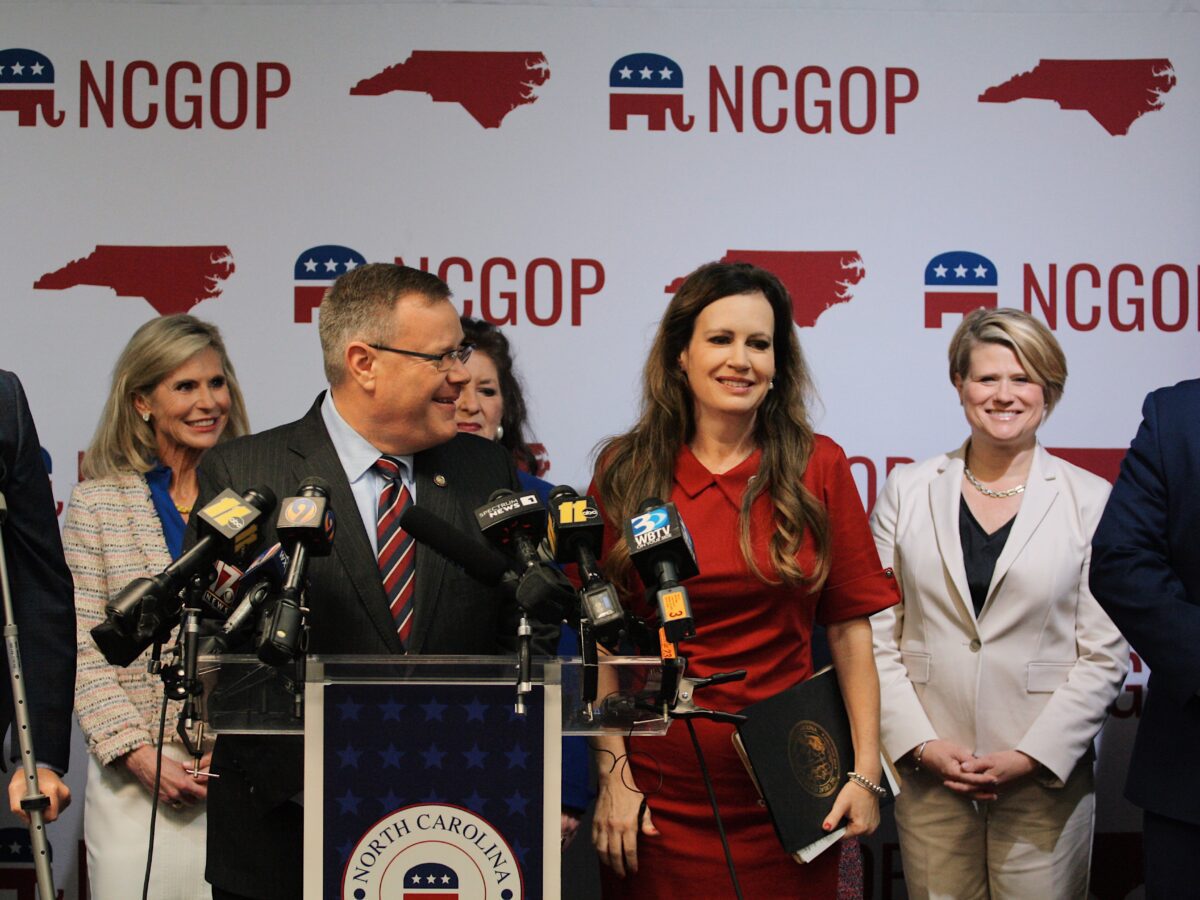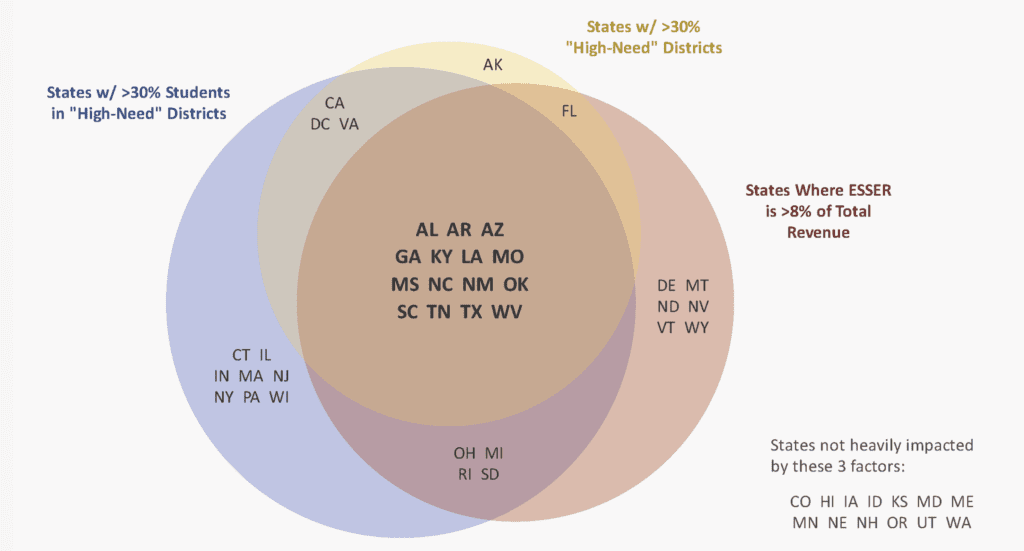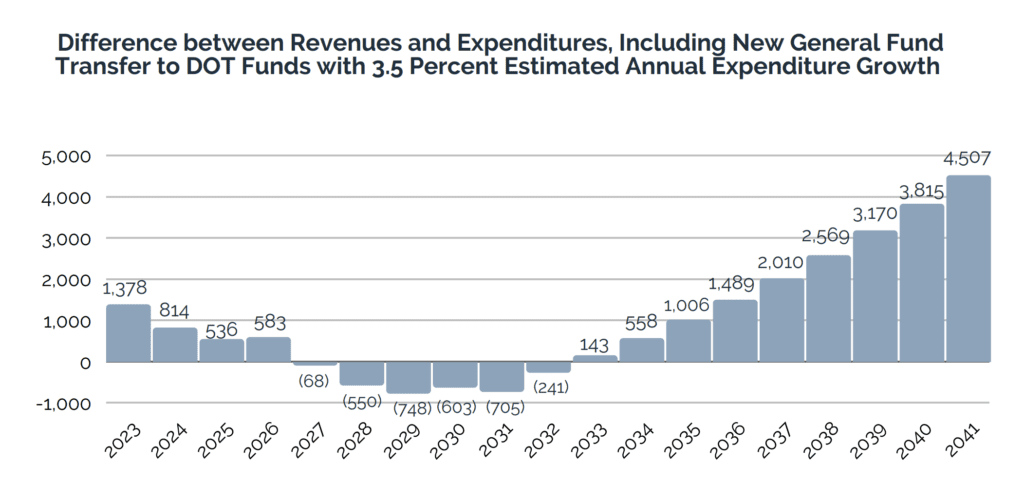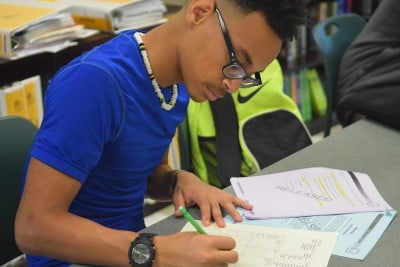

|
|
Part I
At 9 a.m. Wednesday morning, Rep. Tricia Cotham — elected as a Democrat from Mecklenburg County, and a former assistant principal and educator — announced at the N.C. GOP Headquarters that she was changing her party registration, handing the Republicans she was flanked by a supermajority.
EdNC, and other news outlets, are reporting on the “major ramifications” for education.
A cohort of provisions in different bills that have already been filed in this long session pose a threat to overall funding for public schools, but even more importantly to enrollment.
In Texas, where similar policy changes have been proposed for longer, an association of rural schools is sounding the alarm and serving as a cautionary tale to policymakers and advocates from both parties.
“If the school goes down, the town goes down with it,” said a superintendent who serves as president of the association.
They are concerned for two reasons: “as a result of losing local students directly to vouchers, or as a result of the overall pot of state funds being diluted to cover private and homeschooling expenses of students in far-away cities and suburbs, leaving less per-student funding for every district.”
It’s not about opposing school choice. It’s about public schools being the “center of community life.” Parents there want good public schools, not what is seen as a government handout to go to private school. Some conservatives see these policy changes as a “betrayal of the party’s rural base.” This whole article is worth a read.
Since state funding for districts is determined by average daily membership (ADM), policy changes here would be felt by all 115 school districts, but especially those in small, rural counties.
Across party lines, that should be cause for alarm. Alarm that precipitates action. Why?
Now U.S. Senator Thom Tillis, R-NC, then the architect of the Republican wins in 2010, won with a strategy of jobs, jobs, jobs. Our students are our future workers, and our districts are our largest employers. In more than half of our counties, they are the top employer. In all of our counties, they are among the top five employers.
A bipartisan, cross-sector coalition of leaders supports the state’s attainment goal.
A national report released this week found North Carolina is among 15 states expected to take the “biggest hit” as ESSER funds expire in 2024.
Coming out of the pandemic, 29 of our 115 districts are designated low-performing, up from just eight districts prior to the pandemic. All of our districts need more support, not less.
Sixty percent of funding for our public schools comes from state appropriations.
Public schools in counties that lean left and counties that lean right remain the best choice for the most students.
It’s time to remind policymakers and parents.
It’s time to remind all policymakers how much our state values public schools
Remember, North Carolina, near the height of the perception of our state as a national leader in education, Leandro was filed in 1994 after almost 100 years of Democratic leadership. The unanimous N.C. Supreme Court decision establishing a constitutional right to a sound, basic education was handed down in 1997.
It has always been difficult — both historically and in the present day — to reconcile the perceptions of North Carolina’s education system and its realities.
What is clear to me from visiting schools then and now is that the challenges we face in providing the sound, basic education that our state constitution and the 21st century education our economy of tomorrow require didn’t begin with the Great Recession or the political shifts of 2010.
Our system of education wasn’t good enough in the 1990s. It isn’t good enough now.
And while Leandro and the comprehensive remedial plan remain hotly contested, especially given the Republican control of the N.C. Supreme Court, our state constitution is clear the people have a right to the privilege of education, and it is the duty of the state to guard and maintain that right.
NC is among the states expected to take the “biggest hit” as ESSER funds expire
As the news broke about Cotham, Education Research Strategies was releasing a report that finds North Carolina is in a cohort of 15 states that will be at “a particular disadvantage” when federal funding from the pandemic expires in 2024.
Why? North Carolina finds itself in all three risk categories, identified in the report:
1) ESSER represents a high percentage of overall education dollars,
2) many of our districts serve a significant number of students living in poverty, and
3) many of our students are attending school in one of those high-need districts.


While superintendents through the N.C. Department of Public Instruction can request an 18-month extension from the U.S. Department of Education to expend the federal funding, the cliff is real.
The collective impact of these bills on ADM is cause for alarm
Public school districts are funded using ADM, a measure of enrollment. Districts get funding that is tied to their ADM, so any loss in enrollment typically leads to a reduction in funding.
Several bills filed this session could draw students away from public schools — including charter schools — threatening their funding at time when they need it the most.
State revenue is projected to decline as these bills would be implemented. And kindergarten enrollment may remain uneven post pandemic.


Expansion of education student accounts
House Bill 420, titled “Expand & Consolidate K-12 Scholarships,” would expand the Personal Education Savings Accounts program (PESA) in North Carolina to include all students and would eventually consolidate PESA with the Opportunity Scholarship program.
Both of these programs provide public money to students to use at non-public schools.
In 2024-25, PESA would expand from being a program for students with disabilities to being open for everyone.
Homeschool students could get up to 28% of the state’s per pupil allocation for average daily membership in the previous year. Any other student attending a non-public school could get up to 33%.
Currently, that program is funded at a level of $49 million. Under this bill, funding for PESA would go up to $326 million in 2024-25 and would increase each year until 2032-33, when it would reach a funding level of $1.54 billion.
That’s more than $1.5 billion with a “b,” y’all.
In 2025-26, the percentage that students attending non-public schools could receive goes up to 66% for a full-time student.
And then, in 2026-27, the Opportunity Scholarship program and PESA would merge. At that point, non-public school students would be able to receive 100% of the state per-pupil allocation for average daily membership in the prior year. Homeschool students would continue to receive 28%.
See also Senate Bill 665, titled “Add Homeschools to Opportunity Scholarships.”
Expansion of vouchers to all students
Senate Bill 406, titled “Choose Your School, Choose Your Future,” would remove the income eligibility requirements for vouchers and award Opportunity Scholarships on a sliding scale.
If enacted, funding would increase to $176 million for the school year starting in August. That’s an $81 million increase.
By 2032-33, total funding would increase to $509 million.
Read more here about this bill, which does not apply to homeschools.
There is a different provision in House Bill 259, the House’s budget bill, that would also expand eligibility for opportunity scholarships. See section A.6.(a) of the bill. By 2032-22, it would increase total funding to $367 million.
Loss of ADM for seniors
Part II of Senate Bill 406 is titled “sequence of course for early high school graduation.” It would require all school districts to allow students to graduate from high school in three years.
Students enrolled in 10th grade in 2023-24 would be eligible to graduate in the 2024-25 school year.
That means by 2025-26, districts could experience a significant loss of ADM for seniors.
Equalization of funding for charters means less money for districts
For each student, districts could find themselves with less funding.
Proposed changes to the funding of charter schools in House Bill 219, titled “Charter School Omnibus,” could leave districts with less money per student. The bill digest says it is the legislature’s intent “that State and local funds for students attending charter schools is to be provided in a manner that results in per-pupil funding roughly equal to that provided to students attending other public school units.”
There is a uniform chart of accounts for districts, which includes nine codes you can see here.
According to this presentation by Fiscal Research in February 2023, charter schools receive the same per-pupil share of state funding as its school district AND the school district must provide “an amount equal to the LEA’s per pupil local current expense appropriation.”
House Bill 219 appears to require more, leaving districts to wonder if they will have to equalize funding with revenue from other funding codes, particularly fund eight.
Fund eight includes “revenues from reimbursements, including indirect costs, fees for actual costs, tuition, sales tax revenues distributed using the ad valorem method pursuant to G.S. 105-472(b)(2), sales tax refunds, gifts and grants restricted as to use, trust funds, federal grants restricted as to use, federal appropriations made directly to local school administrative units, funds received for prekindergarten programs, and special programs and appropriated fund balances (revenues accruing to a school administrative unit in prior years but not yet expended).”
More authority for the Charter School Advisory Board could lead to more charter schools
In North Carolina, the N.C. State Board of Education serves as the charter school authorizing body, based on recommendations from the Charter School Advisory Board.
The House budget would change the role of the charter school advisory board. It would now be called the Charter School Review Board, and it would have the final power to “approve or deny charter applications, renewals, and revocations,” rather than the Board.
This two-step process has been key in moderating the growth of charter schools in North Carolina, relative to other states, fostering strength within the charter school sector, and with consideration for the impact on districts.
A completely new funding model is also being considered
Senate Bill 670, titled “Create New Weighted Student Funding Model,” would abolish “all funds, grants, allotments, and other sources of funding that expend their funds from the State Public School Fund,” and enact a weighted student funding model.
The bill proposes a base funding amount for each student distributed to the school district on the basis of the ADM. Additional allocations would be provided to the district for each student for these categories and at these weighted percentages:
- Grades K-5 — 31%
- Grades 8-12 — 29%
- Economically disadvantaged student — 38%
- Small county school district — 32%
- Student headcount of exceptional children — 130%
- Student headcount of academically or intellectually gifted students — 4%
- Student headcount of limited English proficient students — 10%
The bill proposes for charter schools to be funded the same way and to receive funds directly from the N.C. State Board of Education.
Be on the look out for a fiscal note that hopefully will let us see current funding by district compared with funding by district if this bill passed.
Proposed policy changes raise a lot of questions
While we can see in the bills the proposed increase in funding for these policy changes, what we can’t see is the estimate over time of how many students might choose homeschools or private schools, and thus we can’t estimate the impact on ADM.
We may get a better sense as fiscal notes on these bills are prepared, but in addition to assessing the impact on ADM statewide, we need to understand what factors might contribute to a disproportionate impact on particular districts.
As the state continues to consider how to design school performance grades for public schools, parents will need a way to assess the quality of private schools as well. Some researchers are proposing star rating systems much like we have in the early child care sector.
Currently, North Carolina uses a formula to estimate the number of homeschool students. That would need to change. We would need a real count.
There are questions about testing and accountability. There are questions about the opportunity for fraud, especially with homeschools. There are questions about incentivizing the proliferation of low-quality private schools operating outside of state oversight. There are questions about how this will impact the demographics and exceptional needs of those choosing public schools.
And there is the question of swirl — if parents who choose homeschools or private schools then change their mind, what will be the rules for drawing down ADM as students enroll in school mid-year?
In other states where significant policy changes are under consideration that could impact ADM, stabilization funds have been proposed for districts — in Texas, $10,000 per student for two years for districts with less than 20,000 students. The policy proposals in North Carolina do not appear to include such funding.
At a minimum, it seems like the collective impact warrants some questions. Legislators, please ask your superintendents about the impact of these bills on the districts you serve.
It also seems like it warrants a study commission.
The issue of funding is not new to North Carolina, but we usually go about it in a more coordinated approach with the opportunity for transparency and input.
Back in 2009, the legislature commissioned an evaluation of North Carolina’s school finance system by Denver-based consulting firm Augenblick, Palaich and Associates (APA). A final report was submitted to lawmakers in September 2010, entitled “Recommendations to strengthen North Carolina’s school funding system,” and while there was bipartisan support for pursuing school finance reform, it was put on hold because of the Great Recession.
Five years later, after the recession abated, the legislature asked the now defunct Program Evaluation Division to prepare this report. Hold on for the name of the report: “Allotment-specific and system-level issues adversely affect North Carolina’s distribution of K-12 resources.”
A legislative commission was convened in 2017 to take up the recommendations and the reports. It seemed like legislation might be taken up, and then COVID happened.
The approach and investments of other states are worthy of consideration if North Carolina wants to remain No. 1 for business. Maryland is adding $3.8 billion per year to its education budget if you want to see what a high bar looks like.
In North Carolina and in other states, policymakers note this will increase competition, and it will.
The competition should be to deliver the best education to our students, whatever the setting.
In Part II, a look at how superintendents, educators, and advocates can weigh in and make a difference.
Resources
Presentation by Fiscal Research in February 2023 on public school funding.
Highlights of the 2023 North Carolina Public Schools Budget.
Florida recently enacted similar legislation, hoping to become “the Nation’s biggest school choice laboratory.”
Here is the N.C. Supreme Court decision ruling Opportunity Scholarships constitutional.
Email me at mrash at ednc.org with your questions and observations.
Editor’s Note: This bill was updated on April 6, 2023 to include Senate Bill 665 and Senate Bill 670.




